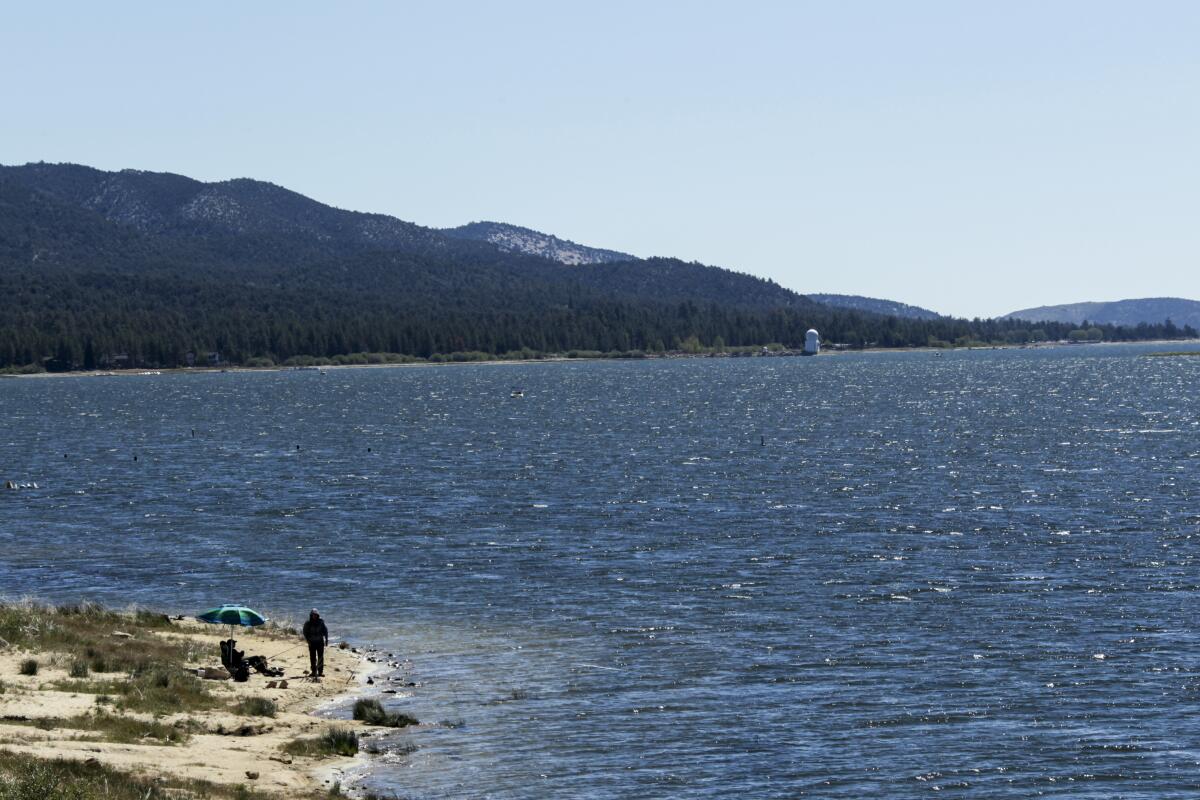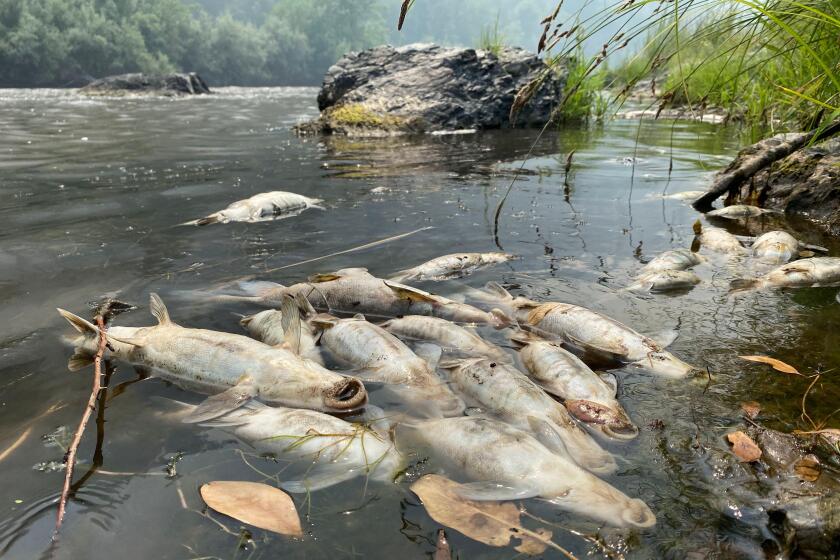Stay out of the water: Officials warn about algae blooms in Lake Elsinore, Big Bear Lake

- Share via
State and regional water officials are urging people to stay out of the waters of Lake Elsinore and Big Bear Lake after elevated levels of algae were detected.
The California State Water Resources Control Board and the Santa Ana Regional Water Quality Control Board are warning both fishermen and recreational users to stay out of the water. They also urge against eating any shellfish from the lake.
“We’ve been monitoring the blooms in both lakes for some time. When certain conditions are favorable for algae and cyanobacteria, they can rapidly grow causing blooms,” Barbara Barry, a senior environmental scientist with the Santa Ana Regional Water Quality Control Board, said in an email. “Algae and cyanobacteria can produce harmful compounds, such as toxins and taste and odor compounds, that cause health risks to humans and animals.”
The algae bloom has been occurring in Lake Elsinore for several months, while the bloom in Big Bear started in July, Barry said.
The world’s clearest large lake could become even clearer because of changes in its plankton population, UC Davis researchers said in the ‘State of the Lake’ report.
The high levels of algae were detected through visual observation and lab results, according to Barry.
The Santa Ana Regional Water Quality Control Board collects water samples twice a month at Lake Elsinore and once a month at Big Bear Lake to monitor the bloom and determine if toxins are being produced, Barry said.
“Recently, cyanotoxins produced from the blooms started increasing, so we recommended to the city of Lake Elsinore and Big Bear Municipal Water District to post signs warning the public around the lakes,” Barry said.
According to Barry, Lake Elsinore was last sampled on Aug. 9 and Big Bear Lake on Tuesday. She expects results from these samples to be reported soon. The findings will be published on the harmful algal blooms incident reports map.
Flash flooding in a Northern California burn scar triggered a massive debris flow that is now suspected of killing scores of Klamath River fish.
Signs have been posted at several public access points around Lake Elsinore by the lake’s staff, Barry said. The Santa Ana Regional Water Quality Control Board also recommends that the Big Bear Municipal Water District post warning signs around that lake and post danger signs at Carol Morrison Public Boat Launch on the east side of the lake, which is where the highest concentrations were detected.
According to warning signs posted at both lakes, people are encouraged not to swim in the lakes and to stay away from scum and cloudy or discolored water. They also ask that people watch their pets and children to ensure they don’t get in or drink the water.
No one should eat shellfish from the lake or use its water for drinking or cooking. Barry warns that boiling or filtering the water will not make it safe.
For fish caught in both lakes, fishermen are asked to throw away guts and clean fillets with tap water or bottled water before cooking.
“There is no estimate at this time when cyanotoxins will decrease to levels we would recommend to be safe for swimming, but we will continue to monitor the levels of cyanotoxins in the water and inform the public of our findings,” Barry said.
If visitors are exposed to algae, they are encouraged to wash themselves with clean water. They should also practice healthy water habits by following instructions on all signs in the area.
Barry encourages people to report any suspicion of harmful algal blooms or related illnesses at mywaterquality.ca.gov/habs/do/bloomreport.html.
“This helps authorities understand where problems are occurring and to respond appropriately,” Barry said.
More to Read
Sign up for Essential California
The most important California stories and recommendations in your inbox every morning.
You may occasionally receive promotional content from the Los Angeles Times.













